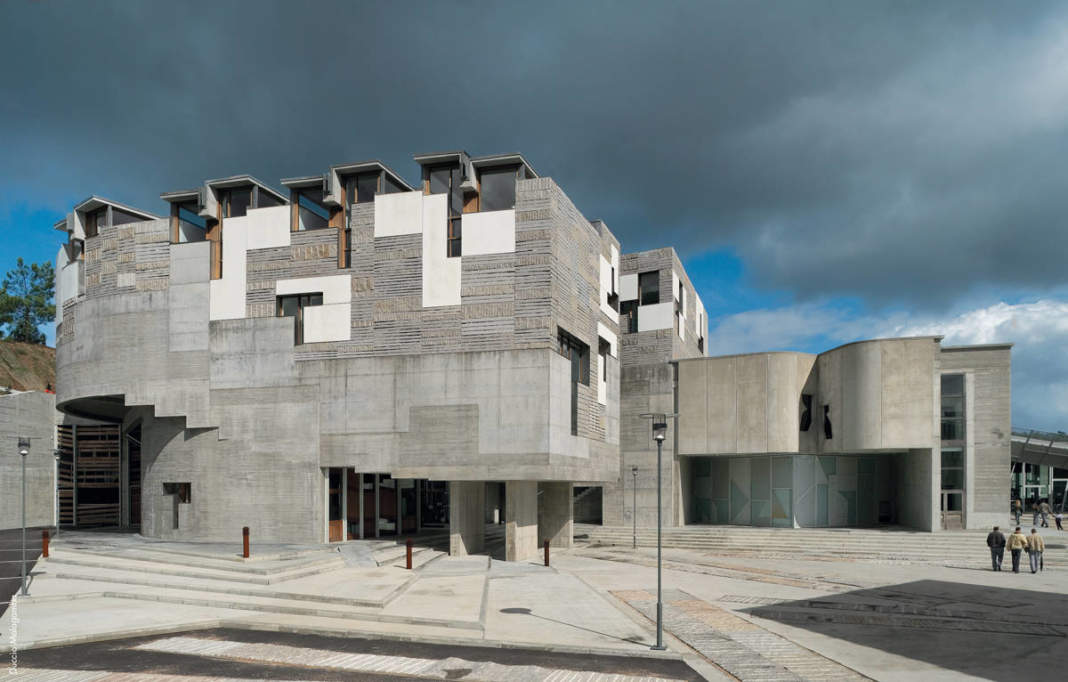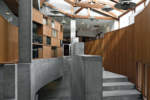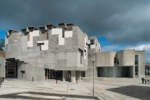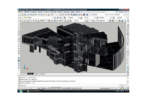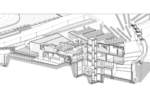architect: Benedetta Tagliabue Miralles Tagliabue EMBT
Analyzing building technologies through 3D drawings. Complex details in the works of EMBT
The rendition of the construction details of a building is normally done with two-dimensional drawing which are not immediately understandable, especially for inexperienced users. They are made with a characteristic graphic, almost a ciphered language, made of screens, hatches, thicknesses that may be distinguished by the lines, which describe the part of the construction but which are not always immediately recognizable for the persons they are principally intended for: architects, building site workers and students. To avoid this situation, it may be useful to prepare three-dimensional renderings of the construction junctions, “axonometric cutaway views”, which provide a clearer explanation of the technologies used to realize a project. These drawings enable one to understand the construction reality more rapidly and make it possible for the architects, both during the phase of ideation and that of actual construction, to govern the ideas and to communicate them more efficiently. Moreover, they reduce the possible misunderstandings between the different operators, and they are, from a didactic point of view, much easier to understand for those who are learning the profession. Axonometric cutaway views are particularly essential for purposes of describing the technologies used in architectural works with a complex geometry, and it is no coincidence that architects who work with complex volumes have historically been the first to illustrate their construction ideas with exploded axonometric view, often drawn by hand.
On the basis of these premises we have set up a research team at the Milan Polytechnic, formed of teachers and students, to investigate the methods of realization and the potentials of these drawings by using, in particular, the works of Miralles Tagliabue EMBT as study cases. This choice has been motivated by numerous factors: the geometric complexity of the works, the extremely heterogeneous character of the building solutions and the materials used, the availability of a great quantity of graphic and photographic materials, the presence of models and the enthusiastic participation and cooperation of Benedetta Tagliabue and the personnel of the firm. Each of the buildings examined has been the subject of a meticulous research which has led to the creation of a large plate of the aggregate, with illustration of the principal construction nodes in the work. The plates of the aggregate and the technological details elaborated, both in 3D and 2D, will be included in a monograph dedicated to the works of EMBT which will be published in 2011 as part of the chain “I libri di Arketipo - Architetture in dettaglio”.
The first phase of the work on a single building consists of gathering all the useful graphic materials: drawings, photographs, photomontages, models, building site photos, technical reports, etc., obtained by contacting the architects, engineers, construction companies and suppliers. This work has fortunately been facilitated by the fact that EMBT has recently classified and digitalized its archive; much of the material has therefore been found in Barcelona. An inspection of the finished building or its building site has then made it possible to identify the modifications with respect to the original plans made during the construction phase. At this point one may commence the work of representation which, on the basis of the traditional general two-dimensional drawings (plans, cutaway views and elevations), combined with the other information obtained, leads to the construction of the first rough three-dimensional model.
In this phase one uses a solid modelling program as for instance Rhinoceros, which makes it possible to manage forms with complex geometry. The next step consists of choosing where to cut the model thus obtained and identifying the ideal angle, in order to show as many of the significant construction nodes in the building as possible. At that point the model, which is still a three-dimensional object, can be exported to another design program, where the unnecessary objects are eliminated and it is transformed into a two-dimensional axonometric view. One finally proceeds with entering the different construction details inside the plate, using the traditional nodes in 2D as basis, and choosing how to shift the various components with respect to one another in order to make the relations, functions and interconnections clearer. The resulting overall drawing provides an immediately understandable and clear general view of the work, not unlike a model, moreover making it possible to understand the construction technologies. These elaborations have among other things made us realize that three-dimensional views also make it possible to solve the nodes that normally “escape” during the planning stage because they are invisible in ordinary cutaway construction drawings; this allows one to reduce errors, facilitates the construction phases and guarantees a better control of the results. It is a matter of instruments that are suited to manage contemporary architectural designs. It is no coincidence that the Spanish pavilion of the Shanghai Expo was designed with analogous techniques.
Matteo Ruta (Milan, 1973), construction engineer, graduated from the Milan Polytechnic in 1999 and obtained the title of Ph.D. in Ergotechnic Construction Engineering in 2003. In 2005 he was appointed research associate for Construction Production at the BEST Department of the Milan Polytechnic, where he teaches at the faculty of construction engineering/architecture.
Since 2006 he is scientific consultant of the magazine “IlSole24Ore Arketipo”.


